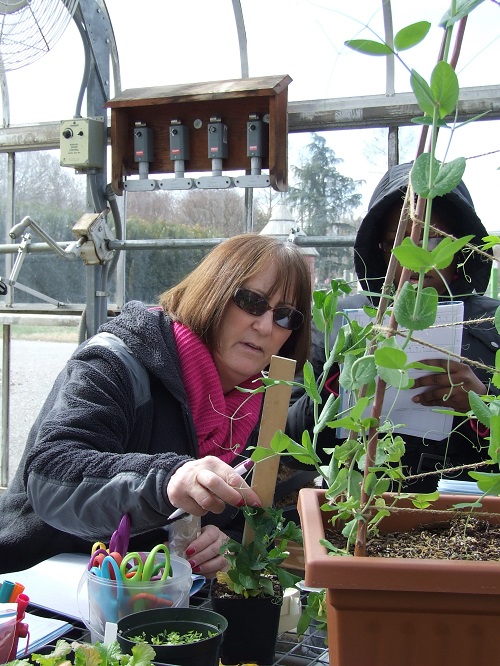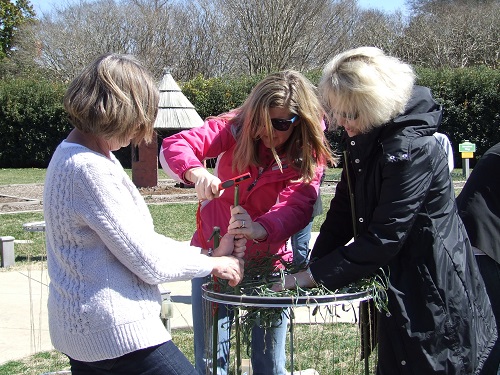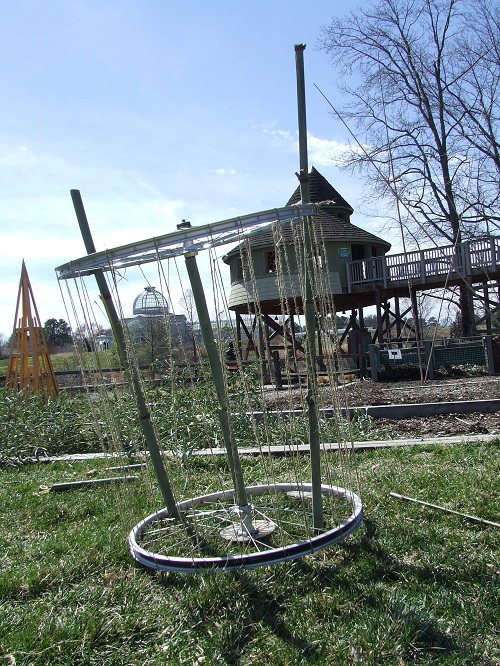Collaborative Learning for and by Teachers
by Jonah Holland, PR & Marketing Coordinator, Lewis Ginter Botanical Garden, Photos by Jonah Holland and Laurel Matthew
Did you know that Thomas Jefferson held a contest with his neighbors every spring: Who can get the first peas from the garden to the table? Earlier this month, we used this same contest to help teachers learn how to use this idea as a springboard for a cross-curricular investigation into what plants need to grow and thrive. First Peas to the Table encourages kids to observe and measure plant growth and change, the function of each plant part comes to life, in real time. And what better way to celebrate than with a culminating in a pea party!
The First Peas to the Table lesson is just one of many classes taught integrating context life science and social studies during our annual Natural Connections Educators’ Conference. We wanted to share with you some of the photos from this very fun day of learning, and also share with you some of the teacher’s feedback.
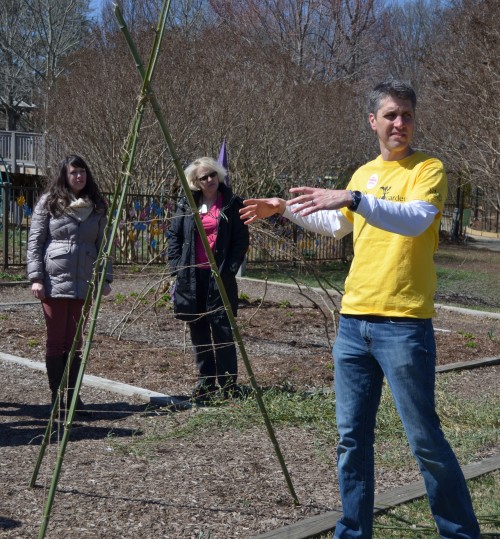
Kristin Mullen, Early Childhood Program Developer at Lewis Ginter Botanical Garden (left) & Matt Darring, City Schoolyard Garden Coordinator at Burnly-Moran Elementary, Charlottesville Public Schools (right).
Kristin Mullen, Early Childhood Program Developer here at the Garden mentioned how she was amazed that many of the “First Peas” lesson teachers had already implemented aspects of the workshop into their teaching within one week.
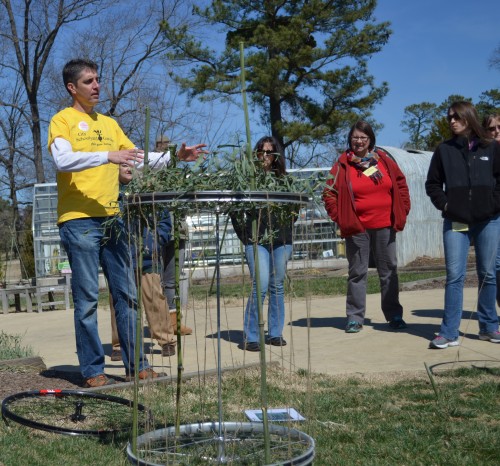
Matt Darring, City Schoolyard Garden Coordinator at Burnly-Moran Elementary, Charlottesville Public Schools, showing educators that pea trellises can be made of anything!
What was the most valuable aspect of the conference?
· I enjoyed the hands-on activities, how the activities related to literature, and the chance to work with other educators and exchange ideas.
· Great resources provided. We know they are out there but it is nice to have them consolidated and the support of the Department of Education.
· The First Peas to the Table workshop was AMAZING! I already have our two 4th grade classes doing the project in our raised beds at Crestview.
Of the activities presented, which ones are you most likely to implement:
· I have already planted peas seeds in my classroom and made garden journals.
· I plan on doing a center-based learning experience with first grade students using the examination of compost, the shelling and estimation of peas, and possibly the designing of the trellis. I will also use the book as well.
· I went to the store the day of the conference so that on Thursday they could plant carrots and radishes. They will record the progress of their plants in their “journals”.
Having attended the conference, do you feel more confident teaching the content of your strand?
· Yes, this experience made the science come to life and simplified for me the steps needed to produce a similar experience for my students.
· It was great to get the hands on experience with building the trellises. I am already an avid gardener and very knowledgeable about planting.
· Yes. Science tends to be my weakest area, but I was reminded to have fun with it.
· Yes. I plant with the children each year. I also keep a journal (of their whole year, Sept-May) But I can take the planting process a few steps further…measuring, drawing.
Based on your experience today, are you more likely to use an interdisciplinary approach to teaching?
· Absolutely. Gave them a preview, at Circle Time, of next week. Talked about Thomas Jefferson and how he relates to our upcoming gardening experience. Some approaches have been so obvious to me….math, science, physical fitness/healthy choices, etc. Never thought of “drawing in” history!
In Summary:
· The information and ideas were relevant and easily replicated. I would like more interdisciplinary strands like this which offer a very authentic, relevant way for students to learn, create, and become more informed citizens. I truly loved this day!
